#manuel de blas
Photo


Dracula vs. Frankenstein (1970)
aka Assignment: Terror
Los Monstruos del Terror
Castilla Films
Dir. Hugo Fregonese
and Tulio Demicheli (uncredited)
and Eberhard Meichsner (uncredited, completed the film)
Karin Dor as Maleva Kerstein
Manuel de Blas as Dracula
#dracula vs. frankenstein#assignment terror#los monstruos del terror#karin dor#manuel de blas#1970s horror
21 notes
·
View notes
Text

UNCHARTED 2022
So, uh, when did you decide to become Indiana Jones?
#uncharted#2022#tom holland#mark wahlberg#antonio banderas#sophia ali#tati gabrielle#rudy pankow#manuel de blas#steven waddington#alana boden
7 notes
·
View notes
Text
youtube
Aventurinha da sessão da tarde: Uncharted fora do mapa (Uncharted, 2022)
#Uncharted#adventure movie#mark wahlberg#tom holland#video games#Ruben Fleischer#Sophia Ali#Tati Gabrielle#Rudy Pankow#Antonio Banderas#Manuel de Blas#Pilou Asbæk#Steven Waddington#tiernan jones#nathan drake#victor sullivan#Youtube
2 notes
·
View notes
Text

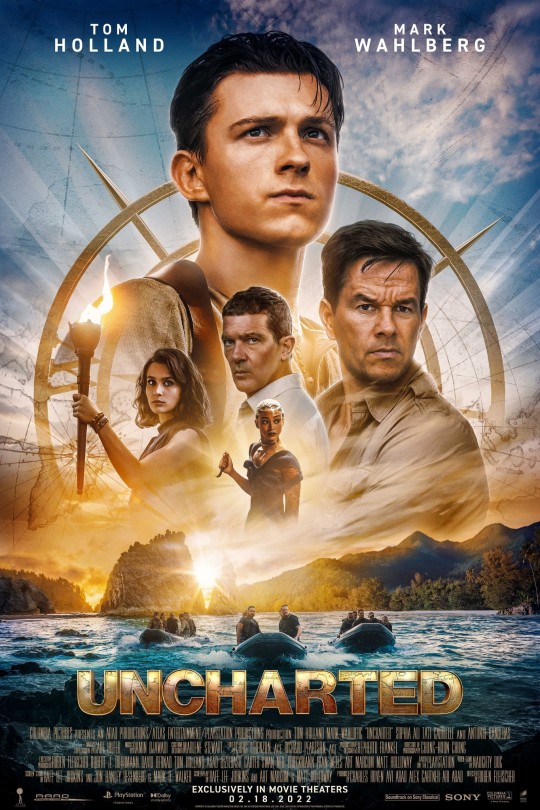


W A T C H I N G
#UNCHARTED (2022)#TOM HOLLAND#MARK WALHBERG#Ruben Fleischer#Sophia Ali#Tati Gabrielle#Antonio Banderas#Manuel de Blas#Nolan North#PLAYSTATION#SONY#TREASURE HUNTER#ADVENTURE FILM#WATCHING
4 notes
·
View notes
Photo
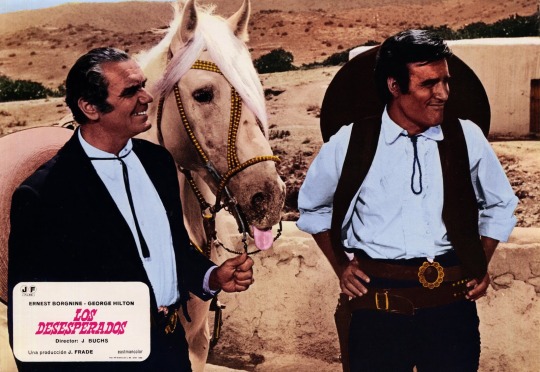
“A Bullet for Sandoval“ AKA Los desesperados by Julio Buchs (1969) Ernest Borgnine and Manuel de Blas in El Pozo de Los Frailes (Almeria)
#A Bullet For Sandoval#los desesperados#Ernest Borgnine#manuel de blas#el pozo de los frailes#cabo de gata#Almeria#cinema#western
0 notes
Text

Colliure, 1959. Homenaje a Machado de los poetas de la generación de los Cincuenta: de izquierda a derecha y de arriba a abajo, Blas de Otero, José Agustín Goytisolo, Ángel González, José Ángel Valente, Alfredo Castejón, Jaime Gil de Biedma, Alfonso Costafreda, Carlos Barral y José Manuel Caballero Bonald.
#blas de otero#josé agustín goytisolo#ángel gonzález#josé ángel valente#alfredo castejón#jaime gil de biedma#alfonso costafreda#carlos barral#josé manuel caballero bonald#antonio machado
32 notes
·
View notes
Text
El Ayuntamiento licita el reinicio de las obras en la plaza de San Blas por 4,5 millones
La Junta de Gobierno Local ha aprobado la licitación del reinicio de las obras en la plaza de San Blas con un presupuesto de 4,5 millones y un plazo de ejecución de diez meses.
Se trata de un procedimiento abierto, de tramitación urgente, utilizando varios criterios para la adjudicación para contratar la ejecución de las obras de “Reinicio de la reforma integral de la Plaza de San Blas y calles…

View On WordPress
0 notes
Text

Tombs of the Blind Dead will be released on Blu-ray on October 24 via Synapse Films. Other than the packaging, CD, and booklet, its identical to last year's Steelbook edition.
Also known as The Night of the Blind Terror, the 1972 Spanish-Portuguese horror film is written and directed by Amando de Ossorio. Lone Fleming, César Burner, María Elena Arpón, José Thelman star.
Tombs of the Blind Dead has been newly restored in 2K from the original uncut camera negative. It includes the original Spanish version, an English/Spanish hybrid soundtrack, and the re-edited US theatrical cut, each with lossless PCM 2.0 mono audio.
Special features for the two-disc set are detailed below.
Disc 1: Blu-ray:
Original Spanish-language and English/Spanish hybrid soundtrack versions
Audio commentary by actress Lone Fleming
Audio commentary by film historian Troy Howarth
Audio commentary by the NaschyCast’s Rod Barnett & Troy Guinn
Marauders from the Mediterranean – Feature-length documentary on Spanish zombie cinema with Night of the Living Dead writer John Russo, The Living Dead at Manchester Morgue director Jorge Grau, actors Lone Fleming, Helga Liné, Manuel de Blas, Antonio Mayans, and Jack Taylor, Paul Naschy’s son Sergio Molina, Sitges Film Festival deputy director Mike Hostench, and film historians/academics John Martin, Calum Waddell, Kim Newman, and Steve Jones
Revenge of Planet Ape alternate U.S. opening sequence
Awakening of Spanish Horror Cinema featurette
“Templar’s Tears” music video by Salem’s Pop
Original theatrical trailer
Still gallery
Disc 2: Blu-ray:
US theatrical cut
Tombs of the Blind Dead begins with a trio of friends getting together for a camping trip that quickly turns into bloodcurdling horror as a legion of long-dead Knights Templar rise from their graves in search of human flesh! When the Templars were originally executed for their cannibalistic rituals, they were hanged outside to die as crows pecked out their eyes. Now, armed with ancient swords and riding their skeletal undead horses into the night looking for prey, these mummified creatures cannot see… they hunt purely by sound alone.
Pre-order Tombs of the Blind Dead.
#tombs of the blind dead#synapse films#horror#70s horror#1970s horror#dvd#gift#spanish horror#amando de ossorio#70s movies#1970s movies#zombie#zombies#zombie movies
31 notes
·
View notes
Text
Thanks to Courfeyrac, we're starting off on a fun note:
“I have just met Marius’ new hat and new coat, with Marius inside them. He was going to pass an examination, no doubt. He looked utterly stupid.”
Poor Marius. He's trying! But apparently he's not great at fashion.
A brief political note:
"Near the basin there was a bourgeois forty years of age, with a prominent stomach, who was holding by the hand a little urchin of five, and saying to him: “Shun excess, my son, keep at an equal distance from despotism and from anarchy.” Marius listened to this bourgeois."
From this man's status (he's bourgeois, and the mention of his stomach may imply that he's well off because he's well-fed), we could make some assumptions about his politics. If he's well under this order, he may be in favor of some kind of constitutional monarchy (like that of Louis Philippe, which was popular with the wealthy segments of the bourgeoisie). "Despotism," then, could refer to absolute monarchy, while "anarchy" could be a more democratic order. That being said, it's notable that this language is so vague. We could speculate about what he means, but it would be just that: speculation. Given that Marius' own political leanings have become "sympathies," it's significant that he's listening; his beliefs are vague, too, and that can make this context-less statement sound a lot more acceptable than what it might mean. Marius himself approves of Louis Philippe, but that doesn't mean he might disagree with this man if they discuss what "despotism" means. This moment of vague politics suggests that many bourgeois Parisians were more interested in stability at the time than drastic change (hence the emphasis on moderation), but it also reminds us that Marius had a similar mindset, partly because he had come to accept vague principles rather than specific policies.
In terms of how Marius approaches "Mlle Lanoire," I normally think comparisons between romance and conquest are hit-or-miss (if the relationship is supposed to be nice, conquest isn't a great metaphor, but it can be great for deconstructing ideals about relationships), but I think it works well here because of Marius' past. He may not be a committed Bonapartist right now, but a lot of his self-discovery is tied to Napoleon and his father's military history, so using a military metaphor for another defining character moment fits into a larger pattern of how Marius understands himself and the world around him. It also adds an image of stiffness to his movements (enhanced by the reference to how he looks "mechanical"), which reminds us of his awkwardness.
His academic thoughts are also so funny:
"At that moment, he was thinking that the Manuel du Baccalauréat was a stupid book, and that it must have been drawn up by rare idiots, to allow of three tragedies of Racine and only one comedy of Molière being analyzed therein as masterpieces of the human mind."
I've heard that Molière became more popular during the Restoration, so that might explain his opinion (although I would love to learn more!). Judging curriculum choices like this is certainly part of being a student, though, so it's nice to see how Marius relates to his studies (and how he still has other stuff going on even now that he's in love! This is just one new aspect of his life, but he's dealing with everything else as well).
And this!:
“She could not, however,” he thought, “help feeling esteem and consideration for me, if she only knew that I am the veritable author of the dissertation on Marcos Obrégon de la Ronde, which M. François de Neufchâteau put, as though it were his own, at the head of his edition of Gil Blas.”
Some of Hugo's writing was in that edition and he wasn't credited for it, so this is both a moment of pettiness from the author and an attempt to show Marius' academic achievements (which is also funny, because who knows if this dissertation would really impress a random person? And he has no way of proving that he wrote it, either).
#les mis letters#lm 3.6.4#marius pontmercy#I feel a little bad for laughing so much at Marius#but he's such a mess in this chapter and it's funny
21 notes
·
View notes
Text



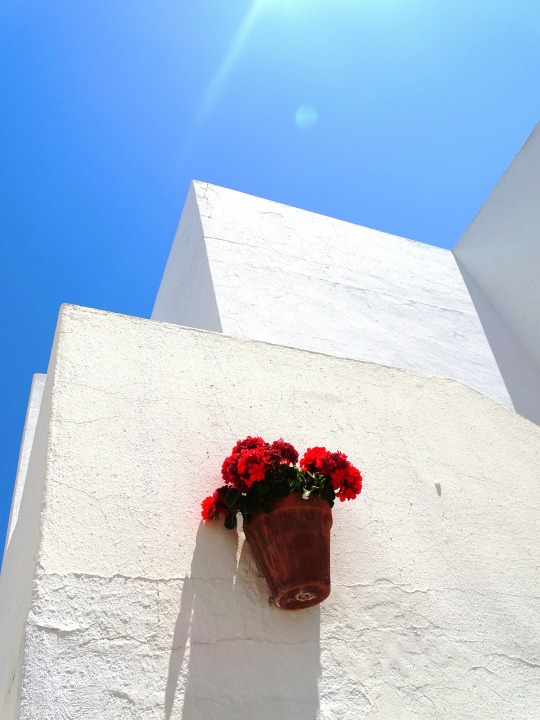



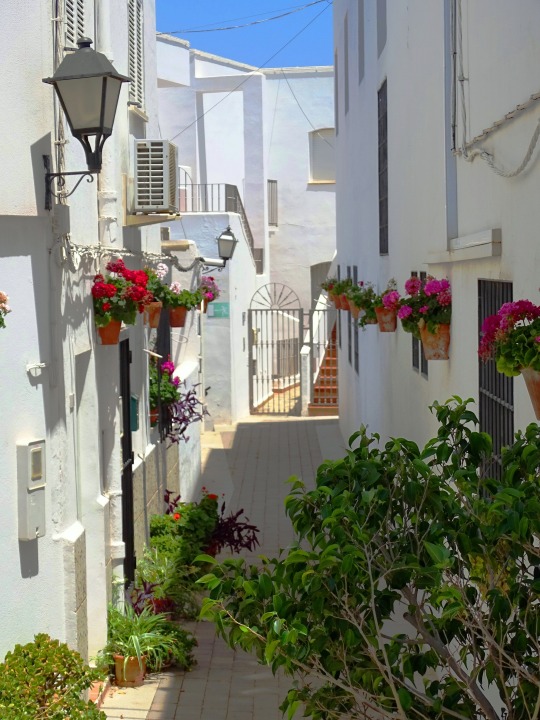

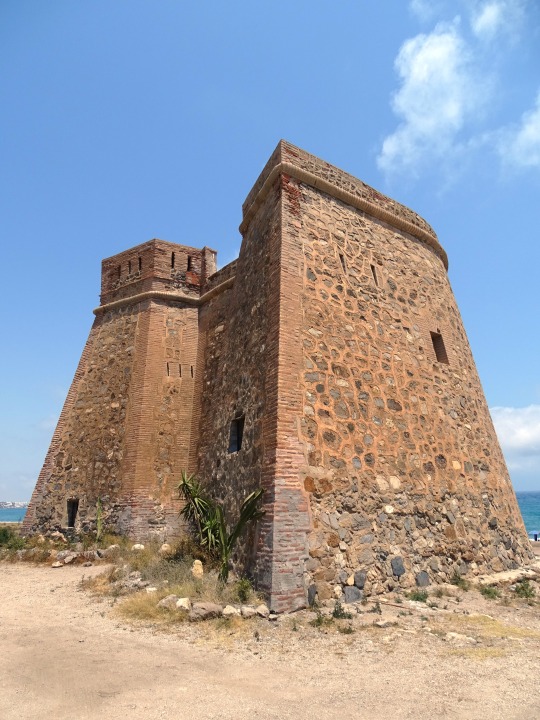

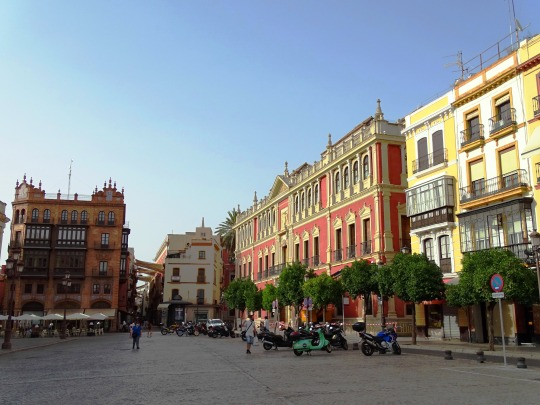

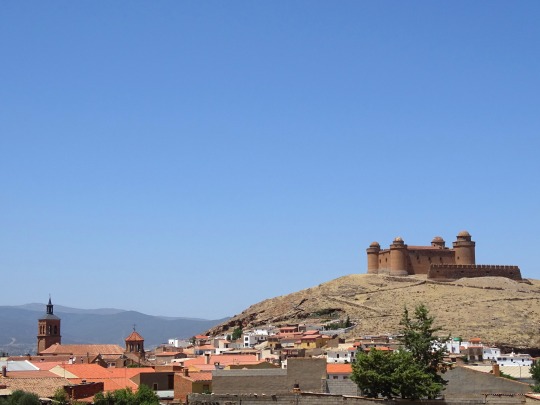

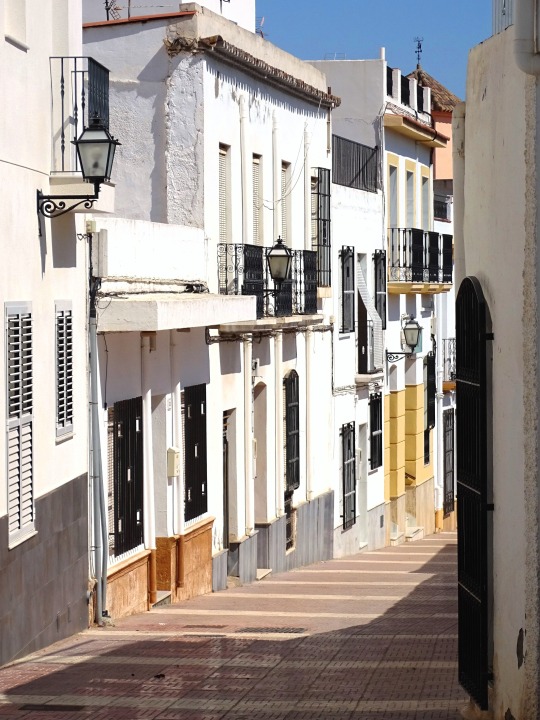


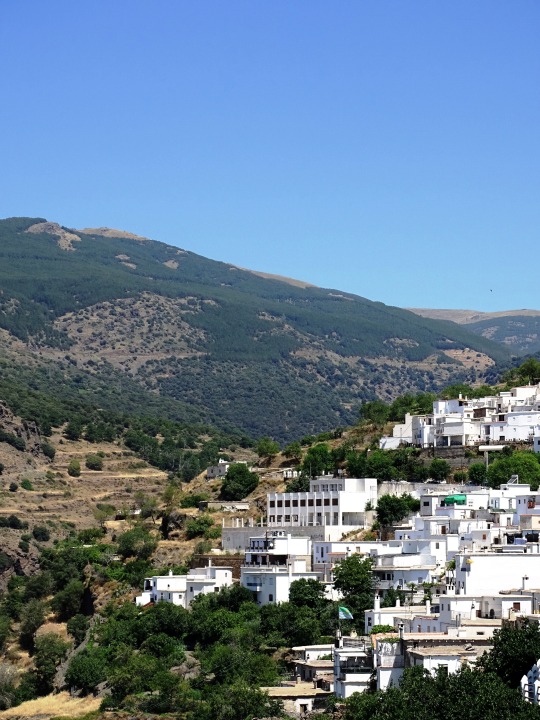

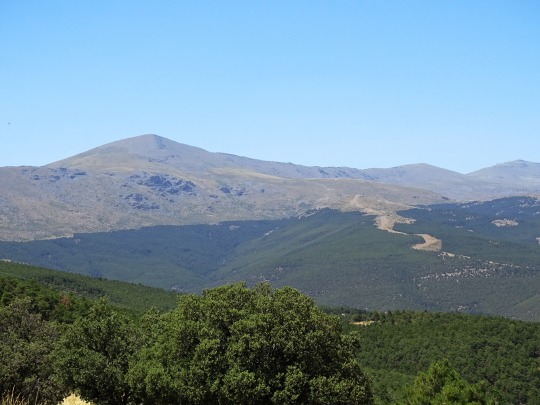
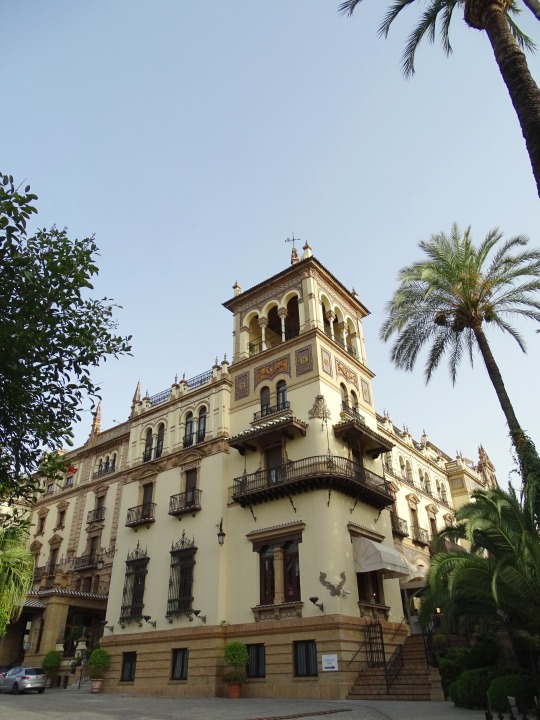




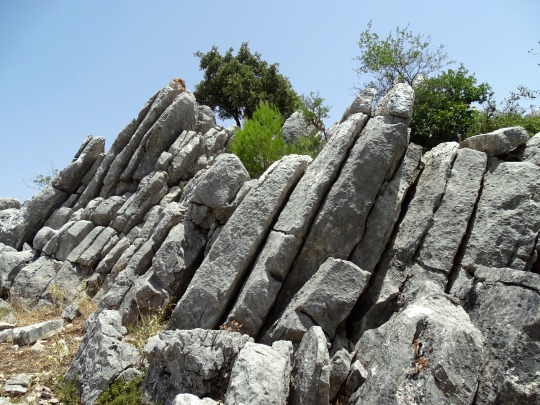

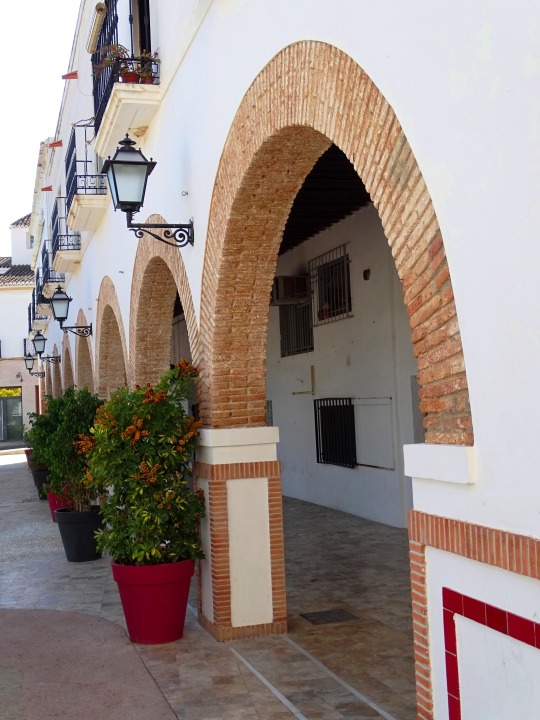
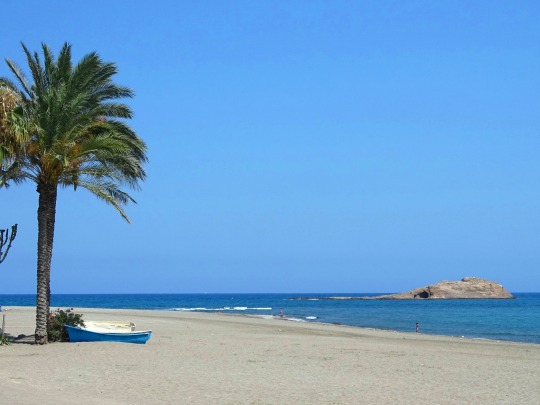
Andalusia Day
Andalusia Day or ‘Dia de Andalucia,’ is celebrated every year on February 28 in Spain. Andalusia is located in the southernmost region of the country and on this day in 1980, the people of the region voted to make it an autonomous community in Spain. The word ‘autonomous’ implies the power of a community or territory to self-govern and make its own decisions without outside interference. Although a few nationalist groups prefer to celebrate on December 4, February 28 is the officially recognized date for Andalusia Day.
History of Andalusia Day
On February 28, 1980, the people of Andalusia organized and held a referendum, titled the ‘Statute of Autonomy of Andalusia referendum.’ The purpose of the vote was to decide on the independence of the Andalusian community. The referendum was successfully passed and from that day, Andalusia became autonomous.
However, a few nationalist groups choose to celebrate Andalusia Day on December 4, a date which marks the demonstrations to demand independence that took place in 1977. Andalusia Day is celebrated as a community public holiday where businesses may close to participate in the festivities. It is, however, only celebrated in Andalusia and not the rest of Spain.
Some schools may also close for a week to participate in a ‘Semana Cultural’ or ‘Semana Blanca’, which means a cultural week or white week respectively. Schools also celebrate the Friday before Andalusia Day with a traditional Andalusian breakfast of sliced toast drizzled in olive oil and a cup of orange juice. Students also color in pictures of the symbols of Andalusia.
Andalusia Day is usually observed by families in intimate gatherings, although festivals and other social activities also mark the day. The people of Andalusia usually decorate their buildings with the national flag, as well as green and white bunting.
Andalusia is located in Southwestern Europe, south of the Iberian Peninsula. It is largely an agricultural community, though, in recent times, it has seen exponential growth in industrialization. Andalusia has eight parts to it, Almeria, Cádiz, Córdoba, Granada, Huelva, Jaén, Málaga and the capital city of the community, Seville.
Andalusia Day timeline
1918 Flag of Andalusia
The flag of Andalusia is designed by Blas Infante, a writer, historian, and politician also referred to as the father of Andalusian nationalism.
1977 Demonstrations for Independence
A public protest takes place to demand Andalusian autonomy.
1980 The Statute of Autonomy
The ‘Statute of Autonomy of Andalusia’ referendum is passed into law.
2007 Parliament of Andalusia Awards
The Parliament of Andalusia grants the Medal of Andalusia to Miguel Báez Espuny and honors José de Sousa Saramago, with the title, ‘the Favorite Son of Andalusia.’
Andalusia Day FAQs
Does Andalusia have a president?
Yes. The current president of Andalusia is Juan Manuel Moreno Bonilla.
What language is spoken in Andalusia?
Spanish is the official language, although you will find different dialects depending on the region.
Is Andalusia a small community?
Andalusia is home to over eight million people so, a relatively large population considering its size, a little over 87,000 kilometers square.
How to Observe Andalusia Day
Spend time with friends and family
Celebrate with color
Use the hashtag
For all the wonderful Andalusian people, celebrate this special day by taking the time to spend with friends and family. Also take a moment to reflect on what being part of a community means to you.
Decorate your home, office, or place of business with colors representing Andalusia. The colors of their national flag are dark green and white.
Spread the sense of pride in the community on Andalusia Day by using the hashtag #andalusiaday on all your social media platforms. Start an online conversation.
5 Fun Facts About Andalusia
Largest population
Land of the vandals
Caves of Nerja
Christopher Columbus
Andalusia’s hinterland
Andalusia is one of the autonomous communities in Spain with the largest population.
Andalusia means ‘land of the vandals.,’ and refers to a German tribe that settled there in the third and fourth centuries and were considered destroyers.
In Andalusia’s Caves of Nerja, the earliest-known artwork in human history was found.
It was from Andalusia that Christopher Columbus embarked on his famous journey of discovering America.
Andalusia’s hinterland is the hottest region of Europe.
Why Andalusia Day is Important
It’s a declaration of independence
It’s an opportunity to have fun
It reminds us of the value of community
The day is a joyful reminder of the fact that Andalusia is a self-governing community. It’s a celebration of the region’s history in achieving sovereignty.
Andalusia Day affords individuals the chance to partake in activities. Look out for community events such as cultural week or festivals that pay homage to this day.
Andalusia Day promotes a great sense of community among Andalusians. The shared history helps to break down barriers.
Source
#Andalusia Day#Dia de Andalucia#28 February#Sevilla#Seville Cathedral#summer 2021#original photography#Spain#España#cityscape#landscape#architecture#tourist attraction#Dalías#Alcazaba of Almería#Mojácar#Carboneras#Mediterranean Sea#Sierra de las Nieves National Park#Sierra Nevada#La Calahorra#Casasola Dam & Reservoir#Bayárcal#28 February 1980#anniversary#Spanish history#travel#vacation#landmark
3 notes
·
View notes
Text
The current dubbing voices of RWBY (Las voces de doblaje actuales de RWBY)
Miriam Aceves - Trifa
Kevin Adrián - Vale Councilman
Yadira Aedo
Montserrat Aguilar
Víctor Hugo Aguilar - Jabberwalker & Blue Four
Luis René Aguirre
Rossy Aguirre - Red Haired Woman
Leonardo Agustín
Santos Alberto
Héctor Alcaraz
María Álcazar - Mistral Woman
Raúl Aldana - Drunk Mann & Floyd the Geist Grimm
Diana Alonso
Gerardo Alonso
Karina Altamirano - Atlas Businesswoman
Mariangny Álvarez
Lourdes Ambriz
Raúl Anaya - Clover Ebi & Cardin Winchester
Ximena de Anda - Amber & Trophy Wife
Jessica Ángeles - Ruda Tilleroot & Dew Gayl
Denisse Aragón - Shovel Mom & Purple Paper Pleaser
José Arenas - Toy Soldiers
Luna Arjona
Raymundo Armijo
Lourdes Arruti - Miltia and Melanie Malachite
Mario Arvizu - Professor Ozpin
Yamil Atala - Russel Thrush
Laura Ayala
Jorge Badillo - Professor Theodore
Ángel Balam - Curious Cat
Liliana Barba - Coco Adel
Oliver Díaz Barba
Alicia Barragán - Deery & Roane Ashwood
Eder La Barrera
Iván Bastidas - Blue Paper Pleaser
Alfredo Gabriel Basurto - Anima Mayor
Ricardo Bautista - Pretend God Ozma
Ramón Bazet - Toy Soldiers & White Pawn 04
Carlos Becerril
Diego Becerril - Toy Soldiers
César Beltrán
Mauricio Bennetts
Alberto Bernal - Scarlet David
Emmanuel Bernal - Corsac Albain
Tatul Bernodat - Menagerie Guard 01
Julia Bilous - Alyx
Sergio Bonilla
Óscar Bonfiglio
Alan Bravo - Young Blacksmith
Hernán Bravo - Fenix Atar
Simone Brook - Tock
Ricardo Brust - Saber Rodentia
David Bueno - White Pawn 03 & V1 White Fang Goon
Nicolás Calderón
Cristina Camargo
Pepe Campa
Carlos del Campo - Crow Bar Bartender
Manuel Campuzano - Mistral Pilot
Raúl Carballeda
Gaby Cárdenas - Red Paper Pleaser/Genial Gem & Rowena Sunnybrook
Juan Alfonso Carralero
Marcel Carré
Luis Carreño - Yellow Paper Pleaser
Regina Carrillo - young Nora Valkyrie
Roberto Carrillo - Toy Guard
Ernesto Casillas
Paulina García Casillas - Matte Skye
Sonia Casillas - Reporter 02 & CCT Voice
Arturo Castañeda - Perry
Carla Castañeda - Velvet Scarlatina
Mario Castañeda - The Hound
Beto Castillo - Bartholomew Oobleck
Arturo Cataño - Husband
Rubén Cerda - Ambrosius
Enrique Cervantes - White Pawn 02
Lileana Chacón - Sienna Khan
Agustina Cirulnik - Neopolitan
Ariel Cister
Francisco Colmenero - Peter Port (Beacon Arc)
Jesse Conde - Klein Sieben & Seven Butlers
Armando Coria
Ivanna Corona - Small Girl
Bruno Coronel - Yuma
Andrea Coto - Menagerie Guard 03
Andrés Gutiérrez Coto
Sergio Gutiérrez Coto - Roman Torchwick
Elsa Covián - young Maria Calavera
Víctor Covarrubias - Just Rite Bartender
Irwin Daayán - Green Paper Pleaser
Gustavo Dardés
Marcus De La Vega @marcmarcmomarc - Schnee Waiters
Salvador Delgado
Alejandra Delint
Esteban Desco - Shay D. Mann
Juan Pablo Diaz - Crimson
Manuel Díaz
Emiliano Dionisi
Idzi Dutkiewicz - Li Ren & Rhodes
Erica Edwards - Robyn Hill
Juan Antonio Edwards
Paula Arias Esquivel
Berenice Esquivel
Héctor Estrada - Angry Atlas Businessman
Germán Fabregat - Qrow Branwen
Karla Falcón - Harriet Bree & Nebula Violette
Constanza Faraggi
Dafnis Fernández - James Ironwood
César Filio - Herbalist
David Filio
Iván Filio
Mario Filio - Peter Port (Anima Arc - present)
Rona Fletcher - Madame
Kerygma Flores - An Ren & Oscar’s Aunt
Óscar Flores - Jaune Arc, Dream Actor Jaune Arc, Negative Jaune, & Jaune’s Weapons
Eduardo Fonseca - Hei “Junior” Xiong & Reporter 01
Enzo Fortuny - Neptune Vasilias
Camila Díaz Fraga - Ciel Soleil
Dan Frausto
Denisse de la Fuente
Alina Galindo
Dafne Gallardo
Diana Galván
Graciela Gámez - Councilwoman Camilla
Blas García
Constanza García
Gerardo García
Ivette García - Joanna Greenleaf
Leonardo García
María García
René García
Saidé García
César Garduza
Óscar Garibay - Yatsuhashi Daichi
Fidel Garriga Jr.
Eduardo Garza - Fennec Albain
Claudia Garzón - Higanbana Waitress
Fernanda Gastélum
Meli G - Neon Katt
Eduardo Giaccardi - Vine Zeki
Leslie Gil - Olive Harper
Magda Giner - Caroline Cordovin
Abril Gómez
Cecilia Gómez - Bianca Prisma & White Pawn 01
Gabriela Gómez
Héctor Emmanuel Gómez - Drinking Buddy
Óscar Gómez - Hanlon Fifestone & Toy Soldiers
Sara Gómez
Dalí González
Desireé González
Geezuz González - Fox Alistair
Nycolle González
Alfonso Grau - Amoncio Glass
Alejandro Graue
Maythe Guedes - Teapot Lady
María Inés Guerra
Armando Guerrero
Dulce Guerrero - Cinder Fall
Emilio Guerrero - Ghira Belladonna
Eduardo Gutiérrez
Melissa Gutiérrez
Roberto Gutiérrez - White Fang Lieutenant
Gabriela Guzmán - Elm Ederne
Jesús Guzmán
Maru Guzmán - Glynda Goodwitch
Patricia Hannidez
Carlos Hernández
Cristina Hernández - Penny Polendina
Jesús Hernández
Lucy Hernández
Alondra Hidalgo - Blake Belladonna, Lisa Lavender, & Negative Blake
Olga Hnidey
Danann Huicochea - Jinn
Irina Índigo
Betzabé Jara - Mouse Leader
Dante Jara
Irene Jiménez
Renzo Jiménez
Edurne Keel - Ivy Thickety
Kike
Daniel Lacy - Detective 01
Patricio Lago - Detective 02
Erika Langarica
Jorge Lapuente
Lupita Leal - Fiona Thyme
Miguel Ángel Leal - Terminal Guard
Ixchel León
Constanza Lechuga
Agustín Lezama
Sebastián Llapur - Dr. Merlot
Jaime López - Jinxy
Olivia Luna
José Antonio Macías
Nancy MacKenzie
Wendy Malvárez
Rebeca Manríquez - Kali Belladonna
Fernando Manzano
Ximena Manzano
Talía Marcela
Edgar de Marte
Isabel Martiñón - Fria
Edson Matus - Nadir Shiko
Paco Mauri
Sergio Maya
Alejandro Mayén
Carla Medina - Terra Cotta-Arc
Luis Gerardo Méndez
Ricardo Méndez
Itzel Mendoza
Jared Mendoza
Mireya Mendoza - Yang Xiao Long
Monserrat Mendoza - Ilia Amitola
Pamela Mendoza
Ricardo Mendoza “El Coyote” - Toy Soldiers & Xiong Goon
Rommy Mendoza - Mistral Police Captain
Arturo Mercado - Jacques Schnee & Dream Actor Jacques Schnee
Arturo Mercado Jr. - Taiyang Xiao Long
Mario Díaz Mercado
Pascual Meza - Red Prince
Gabriela Michel
José Luis Miranda - Penny’s Driver
Verónica Montes
Moisés Iván Mora - Whitley Schnee & Dream Actor Whitley Schnee
Zoe Mora - young Lie Ren
María Fernanda Morales
Sergio Morel
Susana Moreno
Jahel Morga
Ángel Mujica - Ramen Shop Owner
Alexa Navarro
Luis Navarro
Sol Nieto
Víctor Noriega
Gloria Obregón - Mata’s Mother
Vanessa Olea
Javier Olguín
Adriana Olmedo
Jorge Ornelas
Alejandro Orozco - Adam Taurus & Dudley
José Luis Orozco - God of Light & Atlas Businessman
Luis Fernando Orozco - Mata
Alexis Ortega - Sun Wukong
Héctor Ortiz
Jessica Ortiz
Mariana Ortiz
Verania Ortiz
Dan Osorio - Dee
Marcela Páez - Xanthe Rumpole
Moisés Palacios - Forest
Patricia Palestino
Julio César Palomera
Rebeca Patiño - Vernal
Fabiola Paulin
Braian Pavón
Mónica Pavón
Romina Marroquín Payró - Weiss Schnee & Negative Weiss
Cecilia Pérez
Manuel Pérez
Mauricio Pérez
Walterio Pesqueira
Estefanía Piedra
José Luis Piedra
Ale Pilar - Summer Rose
Gabriel Pingarrón - Fiona’s Uncle
Layda Álvarez Ponce
Alan Prieto
Mark Pokora - Dr. Arthur Watts
Vicha Punk
Elena Ramírez - Female Mistral Pilot
Gisella Ramírez
Leyla Rangel - Lil’ Miss Malachite
Óscar Rangel
Armando Réndiz
Gerardo Reyero - Dr. Pietro Polendina
David Reyes
Salvador Reyes - God of Darkness
José Luis Rivera
Daniel del Roble - Councilman Sleet
Fernanda Robles - Raven Branwen
Jocelyn Robles
Mariana Robles
Demián Velazco Rochwerger
Valentina Rodríguez
Jorge Roig Jr.
Annie Rojas - Step-Sisters
Mayra Rojas
Octavio Rojas - Hazel Rainart & Tukson
Polo Rojas
Tommy Rojas
Marisol Romero
Óscar de la Rosa
Alfredo Ruiz
Miguel Ángel Ruiz - Tyrian Callows
Pedro Ruiz
Víctor Ruiz
Álvaro Salarich
María Santander
Diana Santos - Disgruntled Grandmother
Roberto Salguero - Ozma
Erick Salinas - Mercury Black
Analiz Sánchez - Nora Valkyrie & Dream Actor Nora Valkyrie
Carlos Sánchez
Georgina Sánchez
Laura Sánchez
Alejandría de los Santos
Carlos Segundo - Mike the Beowolf
Erick Selim - Hawker
Gaby Servín
Carlos Siller
Esteban Silva
Xavier Sol
Raúl Solo - Nubuck Guards
Humberto Solórzano - Leonardo Lionheart
Braulio Sosa
Natalia Sosa
Rosalba Sotelo
Alfonso Soto
César Soto
Valentina Souza - Ruby Rose
Christian Strempler
Luis Leonardo Suárez - Oscar Pine
Noriko Takaya
Fernanda Tapia
Eduardo Tejedo - Shopkeep
Ricardo Tejedo - Marrow Amin
Irasema Terrazas - Salem
Juan Carlos Tinoco
Regina Tiscareño
José Antonio Toledano
José Ángel Torres - Flynt Coal
Laura Torres
Ruth Toscano - May Marigold
Emilio Treviño - Henry Marigold
Verónica López Treviño
Erik Trujillo
Trujo - Bram Thornmane
Víctor Trujillo - Captain
Erika Ugalde - Saphron Cotta-Arc
Emiliano Ugarte
Gaby Ugarte
Xóchitl Ugarte - Winter Schnee & Dream Actor Winter Schnee
Víctor Ugarte - Cyril Ian
Azul Valadez
Andrea Valeria
Karen Vallejo
Francisco Vargas
Héctor Lee Vargas
Tenyo Vargas
Genaro Vásquez
Gerardo Vásquez
Carlo Vázquez - Marty the Beowolf
Carola Vázquez
Jerry Velázquez
Noé Velázquez - Sailor 02
Alan Fernando Velázquez - Lie Ren & Dream Actor Lie Ren
Abraham Vega - Sage Ayana & Brawnz Ni
Berenice Vega - Pyrrha Nikos & Dream Actor Pyrrha Nikos
Jaime Vega
Alicia Vélez - Emerald Sustrai
Humberto Vélez
Maggie Vera
Yolanda Vidal - Willow Schnee & Dream Actor Willow Schnee
Pepe Vilchis - Nolan Porfirio
Ángela Villanueva - Maria Calavera
Angélica Villa - Little/Somewhat
Alejandro Villeli
Gabriela Willer
Alma Wilheleme
Marc Winslow - Sailor 01
Héctor Lama Yazbek
Sergio Zaldívar
Startalents
Luis Antonio Sala Águila
Adolfo Aguilar
Damián Alcázar
Anahí Allué
Sofía Álvarez
Mike Amigorena
Elena Poniatowska Amor
Analy
Ángelica Aragón
Alfonso Arau
Aranza
Roy Ochoa Avilés
J Balvin
Antonio Banderas
Darío Barassi
Mario Bautista
Bazooka Joe
Kuno Becker
Belinda
Gael García Bernal
Demián Bichir
Regina Blandón - Short Boy
Gonzalo Bonadeo
César Bono
María Cecilia Botero
Andrés Bustamante
Jaime Camil
Martín Campilongo
Itatí Cantoral - Atlas Soldier Officer
Roxana Castellanos
Kate del Castillo - Ever After Townsperson
Mauricio Castillo
Mauro Castillo
Irán Castillo
Angie Cepeda
Francisco Céspedes
Omar Chaparro
Chayanne
Cassandra Ciangherotti
Luistio Comunica - Tall Boy
Joaquín Cosio
César Costa - Reporter 03
Jay de la Cueva
Eugenio Derbez
Vadhir Derbez
Juanse Diaz
Karla Díaz
Gustavo Dudamel
Consuelo Duval
Camilo Echeverri
Sandra Echeverría
Erick Elías
Elohim
Sofía Espinosa
Gloria Estefan
Nando Estevané - Dying Huntsman
Faisy
René Franco
Alejandro Fernández
Juan Frese
Cristián de la Fuente
Dama G
Lorenzo Gael
Carolina Gaitán
Rocío Garcel
Isabel Garcés
Antonio Garci
Carlos Girón
Luis Ángel Gómez
Eleazar Gómez
Roger González
Gonzok
Ashley Grace
Maribel Guardia
Juan S. Guarnizo
Salma Hayek
Martín Hernández
Alfonso Herrera
Mónica Huarte
Vanessa Huppenkothen
Benny Ibarra
Javier Ibarreche
Violeta Isfel
Verónica Jaspeado
María José
Kalimba
Carolina Kopelioff
Axel Kuschevatzky
Lali
Ana Layevska - Medium Boy
Andrea Legarreta
Rubén León
Claudia Lizaldi
Rick Loera
Andrés López
Alex Lora
Leonardo de Lozanne
Daniela Luján
Laura Luz
Maluma
Gian Marco
Mick Marcy
Ricardo Margaleff
Angélica María
Criss Martell
Ricky Martin
Sebastián Martínez
Ofelia Medina
Luis Gerardo Méndez
Gaby Meza
Mimí
Ariel Miramontes
Diana Monster
Verónica Montes
Alex Montiel
Galilea Montijo
Silvia Navarro
Andrés Navy
Hanna Nicole
Gerardo “Rojstar” Nuño
Jesús Ochoa - Anima Blacksmith
Cristóbal Orellana
Regina Orozco
Lidwika Paleta
Danna Paola
Mane de la Parra
Mariel Percossi
Maite Perroni
Darío T. Pie
Bruno Pinasco
Pisano
Carlos Ponce
Favio Posca
Pipe Punk
Adal Ramones
Humberto Ramos
Marco Antonio Regil
Ana de la Reguera
Greeicy Rendón
Luisito Rey
Alejandro Riaño
Melissa Robles
Ami Rodriguez
Génesis Rodriguez
Michelle Rodríguez
María Roiz
Memo Rojas Jr.
Cecilia Roth
Yordi Rosado
Erik Rubín
Paco Rueda
Diego Sanardi
Ivete Sangalo
Loretta Santini
Carmen Sarahí - Ever After Blacksmith
Leonardo Sbaraglia
Jessica Segura
Sergio Sendel
Ana Serradilla
Hugo Serrano
Edith Serrano
Diego Schoening
Shakira
Daniela Sierra
Ana María Simon
Pedro Sola
Marco Antonio Solís
Cecilia Suárez
María Eugenia “China” Suárez
Aleks Syntek
Alan Tacher
Tatiana
Thalía
Marco Tolama
Paula “Paulettee” Torres
Sugey Torres
Cecilia Toussaint
Trino
Adrián Uribe
Luiz Valdez
Erika de la Vega
Angélica Vale
Rodolfo Neri Vela
Ana Karen Velásquez
Édgar Vivar
Olga Lucía Vives
Yaneth Waldman
Wereverwero
Xavi
Yahir
Claudio Yarto
Susana Zabaleta
Luz María Zetina
Sergio Zurita
Livier Zúñiga
2 notes
·
View notes
Photo


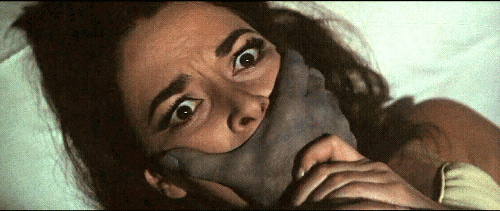
Dracula vs. Frankenstein (1970)
aka Assignment: Terror
Los Monstruos del Terror
Castilla Films
Dir. Hugo Fregonese
and Tulio Demicheli (uncredited)
and Eberhard Meichsner (uncredited, completed the film)
Patty Sheppard as Ilsa Sternberg
Manuel de Blas as Dracula
#dracula vs. frankenstein#assignment terror#los monstruos del terror#patty sheppard#manuel de blas#1970s horror
15 notes
·
View notes
Text
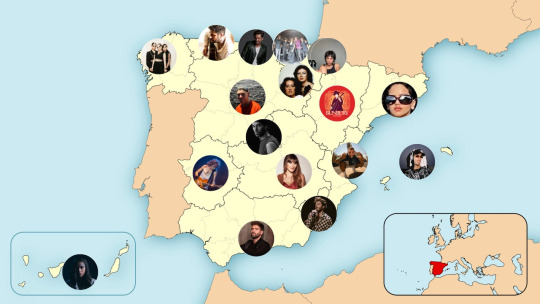
i just found this article from february (2022) in which they list the most listened to artist from each spanish province. i thought it would be fun to list them here with a link to one of their songs in case you want to listen to more spanish music and don't know where to start!
everything will be under the cut, as there's 50 provinces (plus the 2 autonomous cities, also listed!)
Andalucía:
Almería: David Bisbal
Cádiz: Niña Pastori
Córdoba: India Martínez
Granada: Lola Índigo
Huelva: Manuel Carrasco
Jaén: Joaquín Sabina
Málaga: Pablo Alborán
Sevilla: Beret
Aragón:
Uesca: Jarabe de Palo
Teruel: David Civera
Zaragoza: Bunbury
Asturias:
Melendi
Balears:
Rels B
Canarias:
Las Palmas: PtaZeta
Santa Cruz de Tenerife: Don Patricio
Cantabria:
Bustamante
Castilla-la Mancha:
Albacete: Rozalén
Ciudad Real: Dani Fernández
Cuenca: Jose Luis Perales
Guadalajara: Despistaos
Toledo: Pole.
Castilla y León:
Ávila: Marazu
Burgos: La M.O.D.A.
León: Café Quijano
Palencia: La La Love You
Salamanca: Pignoise
Segovia: Hens
Soria: Bordón 4
Valladolid: Celtas Cortos
Zamora: Jesús López-Cobos
Catalunya:
Barcelona: Rosalía
Girona: Mónica Naranjo
Lleida: Ezvit 810
Tarragona: Bongo Botrako
Ceuta:
La Shica
València:
Alacant: Kidd Keo
Castelló: Guitarricadelafuente
València: Zzoilo
Extremadura:
Badajoz: Azúcar Moreno
Cáceres: Extremoduro
Galiza:
A Coruña: Tanxugueiras
Lugo: Lucía Pérez
Ourense: Cepeda
Pontevedra: Sen Senra
La Rioja:
Baccara
Madrid:
Enrique Iglesias
Melilla:
Yosh
Murcia:
Blas Cantó
Nafarroa:
Natalia Lacunza
Euskadi:
Araba: Alex Ubago
Gipuzkoa: La Oreja de Van Gogh
Bizkaia: Fito y los Fitipaldis
#typicalspanish#hope you like em!!!!#also... the fact that there's two ex-auryn members here#are blas cantó and dani fernández the spanish harry styles and louis tomlinson?#harry and louis wish they were as cool as blas and dani 😌#also don't worry i counted them and there's six ot contestants in this list#i know you were dying to know the exact number
25 notes
·
View notes
Text
Cuando Vallecas fue otra cosa

Ganada la Guerra Civil por el fascismo, el Stadium de Vallecas se convirtió en campo de concentración. Allí hacinados, a la intemperie y sin alimento o higiene alguna, 9.500 personas esperaron un destino que de seguro no fue mejor que el duro presente allí padecido.
A continuación se reproduce un texto extraído del libro "El último gol apache: La gira americana del Racing de Madrid" de José Manuel Ruiz Blas, que nos sumerge en una tétrica y sangrante realidad que el franquismo se encargó de hacer cotidiana.
Abril de 1939. Los hombres se hacinan sobre el suelo del campo de prisioneros, sin sitio apenas para tumbarse. Están cubiertos de suciedad, empapados por el temporal de lluvia que cae sobre Madrid. Comen poco, raciones tan escasas que el intestino deja de trabajar y se les forman bolas de heces duras y secas que son incapaces de expulsar. Muchos se meten un dedo en el ano para deshacerlas con la uña. Otros recurren a las varillas con las que se abren las latas de sardinas para hurgarse el recto y cagar unas deposiciones que dejan las letrinas cubiertas de sangre. Los piojos se los comen vivos. Los tienen hasta en las cejas, o en las heridas que se hacen al rascarse. Sus dedos están ennegrecidos de aplastarlos. Abundan los casos de sarna. También de tuberculosis y neumonía, por culpa de la humedad y el frío.
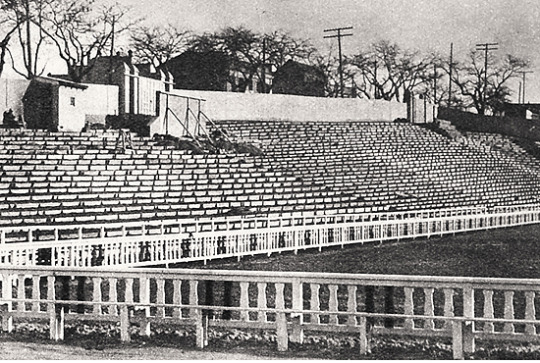
Al término de la Guerra Civil, el estadio de Vallecas se transformó en un campo de concentración. El 1 de abril, el mismo día en que las tropas sublevadas entraron en Madrid, las autoridades franquistas emitieron un bando que ordenaba al personal del Ejército Rojo que se presentara en el antiguo estadio del Racing. Invadido por un olor nauseabundo, lleno de inmundicia, a los tres días ya albergaba a 9.500 prisioneros. A los que llegaron heridos no se los curó. Muchos murieron a la intemperie, bajo la lluvia que anegó Madrid ese mes de abril, y que la propaganda vendió como un signo de la voluntad divina de sembrar España, tras una larga sequía, con las «espigas doradas de la victoria». El lugar sobre el que Racing de Madrid quiso forjar un sueño se convirtió así en un campo de muerte y desolación.

Se cerró al cabo de un mes por la imposibilidad de alimentar a los prisioneros y de atajar las enfermedades. Recuperaría su función original durante el tiempo que el Atlético Aviación jugó allí sus partidos como local, mientras se reconstruía el Stadium Metropolitano, destrozado durante la guerra por su proximidad al frente de la Ciudad Universitaria. Los triunfos que nunca llegaron cuando el Racing fue su inquilino, lo hicieron cuando el Atlético fue el titular del estadio de Vallecas. Allí ganó sus dos primeras ligas. Lo ocupó hasta 1943. El campo se destinó entonces a la Obra Sindical de Educación y Descanso, dedicada a promover actividades culturales, deportivas y de ocio para los trabajadores. En el lugar exacto donde estuvo el estadio del Racing de Madrid se alza hoy el campo del Rayo Vallecano, inaugurado en 1976.

Fotos I Vallecas Web
0 notes
Text
THE GHOST GALLEON (1974) – Episode 212 – Decades Of Horror 1970s
“Gaze! Gaze on the fiery cross and return to the darkness of your cold tombs.” That’ll never work. They don’t have ears! Join your faithful Grue Crew – Doc Rotten, Bill Mulligan, and Jeff Mohr along with guest host Jerry Chandler – as they focus on The Ghost Galleon (1974), the third film in Amando de Ossorio’s Blind Dead series.
Decades of Horror 1970s
Episode 212 – The Ghost Galleon (1974)
Join the Crew on the Gruesome Magazine YouTube channel!
Subscribe today! And click the alert to get notified of new content!
https://youtube.com/gruesomemagazine
Decades of Horror 1970s is partnering with the WICKED HORROR TV CHANNEL (https://wickedhorrortv.com/) which now includes video episodes of the podcast and is available on Roku, AppleTV, Amazon FireTV, AndroidTV, and its online website across all OTT platforms, as well as mobile, tablet, and desktop.
The living corpses of the Satan-worshiping Knights Templar hunt for human victims in a 16th-century galleon.
Written/Directed by: Amando de Ossorio
Selected Cast:
Maria Perschy as Lillian
Jack Taylor as Howard Tucker
Bárbara Rey as Noemi
Carlos Lemos as Professor Grüber
Manuel de Blas as Sergio
Blanca Estrada as Kathy
Margarita Merino as Lorena Kay (uncredited)
Guest host Jerry Chandler returns to tackle another chapter of the Knights Templar/Blind Dead franchise with The Ghost Galleon (1974). The ghoulish critters are trapped on a centuries-old galleon lost in a mist suspiciously tied to another dimension. [scratches head] Que? Ignore the wonky science and enjoy the brilliant Amando de Ossorio atmosphere and the spooky design of the Blind Dead themselves. The characters are (mostly) all despicable and the story is a bit… questionable. Regardless, you can’t deny the impact of the final scenes of the Knights rising out of the ocean, the seawater pouring from their eye sockets as they circle the surviving members for the final kill. Wheeeeeeeeeeeeeee!
At the time of this writing, The Ghost Galleon is available to stream from Wicked Horror TV, Tubi, Full Moon, and Flix Fling as well as various PPV sources.
Gruesome Magazine’s Decades of Horror 1970s is part of the Decades of Horror two-week rotation with The Classic Era and the 1980s. In two weeks, the next episode, chosen by guest host Bill, will be Daughters of Darkness (1971, Les lèvres rouges), an erotic horror film that provides another imagining into the “legend” of Elizabeth Báthory.
We want to hear from you – the coolest, grooviest fans: comment on the site or email the Decades of Horror 1970s podcast hosts at [email protected].
Check out this episode!
0 notes
Text
28 février : la Journée de l’Andalousie
La Journée de l'Andalousie (Día de Andalucia), célébrée chaque 28 février par un jour férié, commémore le référendum de 1980 qui a rendu région pleinement autonome. Ce jour-là, les rues des villes et des villages sont pavoisées de vert et de blanc, les couleurs de la région (comunidad) d’Andalousie.
La fin de la dictature du général Franco qui permis une transition vers la démocratie et l’annonce de l’autonomie de certaines régions (Catalogne, Navarre, Pays basque et Galice). L'article 2 de la Constitution espagnole reconnaît et garantit le droit à l'autonomie des nationalités et des régions espagnoles. Les Andalous voulurent eux aussi bénéficier de ce nouveau régime. Ainsi, le 4 décembre 1977, autre grande date du peuple andalou, près d'un million et demi d'Andalous dans les huit départements (provincia) andalous descendirent dans la rue pour exiger l'autonomie de l'Andalousie.
Cette manifestation massive avait été convoquée par l'Assemblée des parlementaires. À Malaga, cette journée s'est terminée par une tragédie : la mort de Manuel José García Caparrós, un jeune syndicaliste de CCOO, ouvrier de l'usine Cervezas Victoria, décédé après avoir été abattu par la police pendant la manifestation. Le jeune Caparrós est considéré comme l'un des symboles de la lutte du peuple andalou et de son autonomie.
La manifestation du 4 décembre a abouti à la convocation du référendum du 28 février 1980, qui a permis la constitution d’un gouvernement local, la Junta de Andalucía en juin 1979. Ce processus a été le premier et le seul référendum en Espagne proposé de cette manière. Toutes les provincia ont voté oui, à l’exception de celle d’Alméria, où l’autonomie a été instituée d’une autre manière.
Le soulèvement révolutionnaire de Topete à Cadix, au XIXe siècle, considéré comme le germe historique de l'autonomie, et la signature du Manifeste andalou de Cordoue (1919), qui décrivait l’Andalousie comme une réalité nationale, auraient pu aussi servir de date au Día de Andalucia. Les autorités ont préféré célébrer un événement contemporain.
Le Statut d’autonomie a été approuvé en 1981 comme la norme la plus importante pour les Andalous après la Constitution espagnole et qui accorde à l'Andalousie le statut de nationalité historique. En avril 1983, le Parlement d'Andalousie a reconnu Blas Infante comme Père de la Patrie andalouse. Vingt-six ans plus tard, en 2007, les Andalous ont ratifié par référendum un nouveau Statut d'autonomie , dont le préambule reconnaît la réalité nationale andalouse telle que décrite dans le Manifeste andalou de Cordoue de 1919. Le texte final compte au total 250 articles, 11 titres, cinq dispositions complémentaires, deux dispositions transitoires, une disposition abrogatoire et trois dispositions finales.
Depuis 1981, les écoles sont fermées à l'occasion du 28F et de la Semaine Blanche dans certaines régions d'Andalousie. Le vendredi précédant la Semaine Blanche est souvent une fête culturelle dans les écoles. Le traditionnel petit-déjeuner composé de pain à l'huile d'olive est servi et une grande variété d'activités culturelles est proposée.
On chante également l' hymne , une composition de José del Castillo Díaz avec des paroles de Blas Infante inspirées du Saint Dieu, un chant religieux populaire que les paysans et les journaliers de certaines régions andalouses chantaient pendant les récoltes.
Depuis 1983, c’est le jour de la remise des médailles d'Andalousie. Lors d’une cérémonie dans le théâtre de la Maestranza de Séville, le gouvernement local nomme les « fils (ou filles) andalous (es) préférés (es) » d’Andalousie. Les noms des personnes récompensées par le titre sont inscrits dans un registre appelé « Livre d'Or de l'Andalousie ». Le prix consiste en une médaille avec l'inscription Fils préféré d'Andalousie et une plaque d'argent gravée expliquant en détail le motif du prix. Dix médailles au maximum sont attribuées annuellement. Les lauréats porteront le titre de Son Excellence Monsieur (ou Madame). Pour 2024, sont notamment distingués : José Mercé, chanteur de flamenco, et Jerez de la Frontera Santiago Muñoz Machado, le directeur de l'Académie royale espagnole.
Un article de l'Almanach international des éditions BiblioMonde, 27 février 2024
#Séville#Fils préféré d'Andalousie#José del Castillo Díaz#Blas Infante#28F#Manifeste andalou#Junta de Andalucía#José García Caparrós#Día de Andalucia
0 notes